Your competitors are consistently outranking you. Your traffic is dipping lower and lower. And people just aren’t clicking on your website — or maybe it’s not showing up in the search results to begin with. What gives? Is there something you’re doing wrong?
The issue likely lies with your SEO. While you may be using keywords in your articles and doing research to find the good ones, properly formatting your website, and trying to target the right audience, there might be one thing you’re overlooking: keyword gaps.
It’s time to fix your SEO and address the holes in your content. To do so, we’ll help you identify your competitors, capitalize on the keywords you may be missing out on, and show you various tools to patch up those gaps.
What are Keyword Gaps?
Your competitors have likely been doing this longer than you have. No matter what industry you’re operating in, there’s always a bigger dog. And they have the time, money, and resources to do extensive keyword research and target the perfect phrases that attract the most customers.
But it isn’t all hopeless for the smaller businesses. That’s because the keywords driving people to specific sites are free information. And that means you can use it to your advantage, too.

That’s exactly what a keyword gap is: search terms that are bringing traffic to your competitors, but not to your website. In other words, it’s the keywords you’re not taking advantage of. The ones that competing websites are reaping the benefits from while going uncontested in the search results.
Keyword gap research can also be called competitor keyword analysis. You’re analyzing the sources of competing websites’ traffic, and using them to address holes in your own content.
Why is Keyword Gap Research Important?
If you’re not doing general keyword research already, then you should be. Writing articles about random topics just isn’t enough to cut it; you need to be targeting the search terms your target audience uses when looking up information in your industry. That’s the only way to consistently and reliably get clicks on your articles.
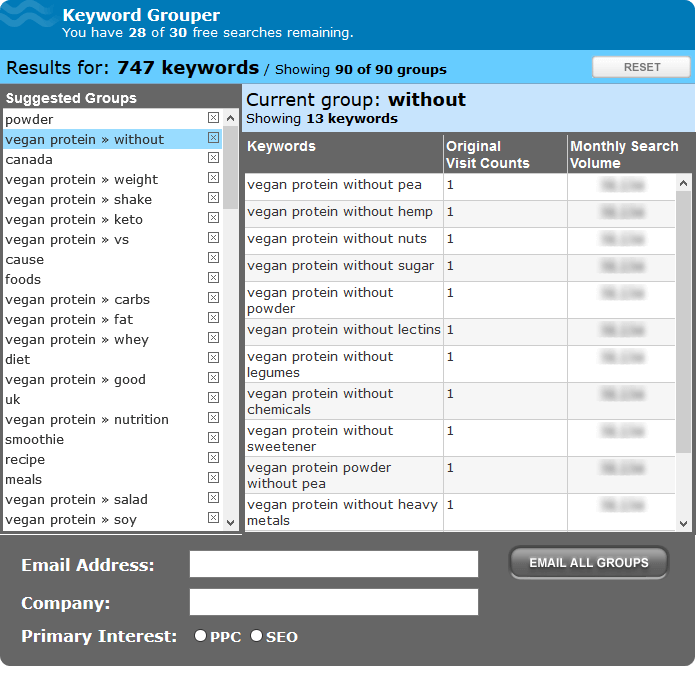
But simple keyword research can have mixed effectiveness. That’s especially if you’re a beginner to SEO and don’t know how to properly use the terms you find. Or, maybe you target the wrong keywords and go after ones that don’t have enough search volume or very little potential for growth.
The thing about your competitors’ keywords is, they’re already proven to be effective. You can see that they’re in high use and generating plenty of traffic for them. Nudging your way into those search results can be difficult and requires high-quality content. On the other hand, you’re currently essentially letting them rake in all this traffic unchallenged.
If you can start to rank for these high-volume keywords too, it could divert a bit of that traffic to your website instead.
Finding Your Top Competitors
If you want to find your keyword gaps, you’ll need to know who your competitors are. You may already have a few ideas, but you need to know for sure who you’re going up against. It might be surprising to find exactly what websites are drawing traffic from your target audience.
The simplest way to find competitors is to just plug a few keywords from your industry into Google and see what appears at the top. This is a good place to start, but won’t get you information like the other keywords bringing people to those sites or the amount of traffic they get.
You could also put your site into Alexa’s similar sites tool and see what appears. Or if you add related: in front of your website’s URL in Google (Example related:google.com), it will bring up other websites like your own.
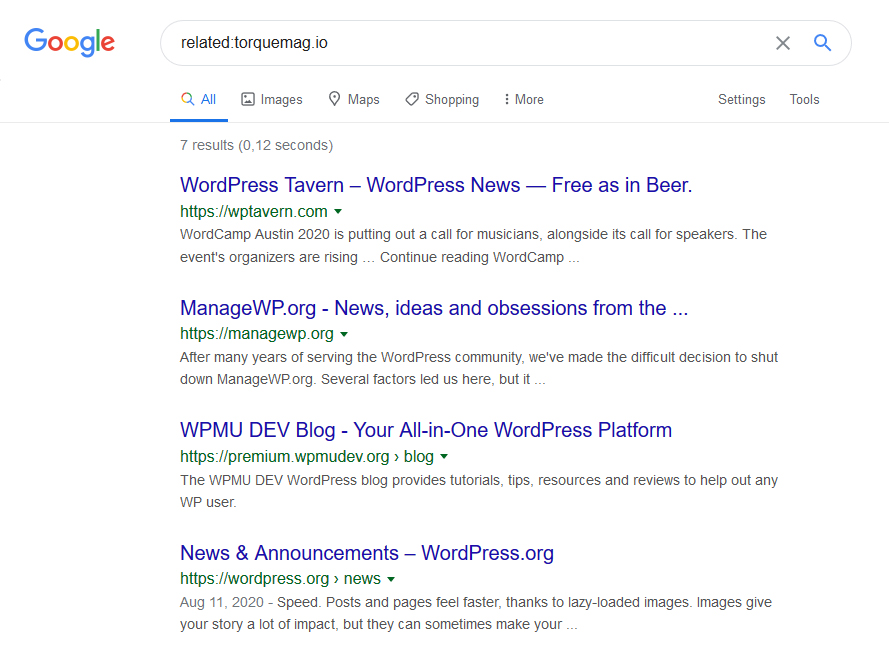
Many of the tools listed below (notably SpyFu) provide a list of top competitors and extra metrics such as traffic volume and demographic. However, it’s still good to do some research of your own.
How to Find Keyword Gaps in Your Content
There’s a lot of valuable data just floating around, waiting to be analyzed. It’s possible to get detailed statistics on the type of people visiting competitor websites, and the keywords that get them there.
All you need is a tool to gather this data and display it for you. Any one of these six keyword analysis tools will do the job exceptionally.
SEMRush
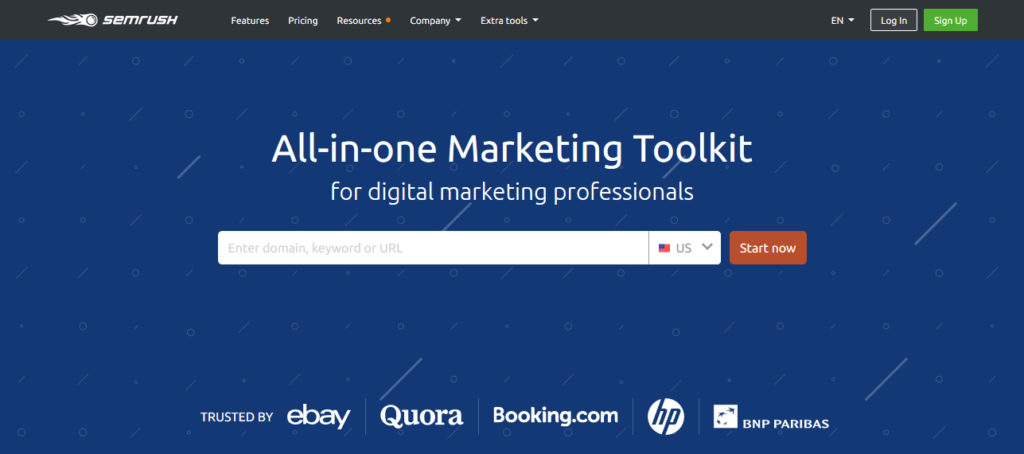
The popular all-in-one marketing toolkit has everything you need to optimize your SEO, content marketing, and advertising efforts. Their advanced Keyword Gap tool can analyze the top keywords of up to five competitors at once.
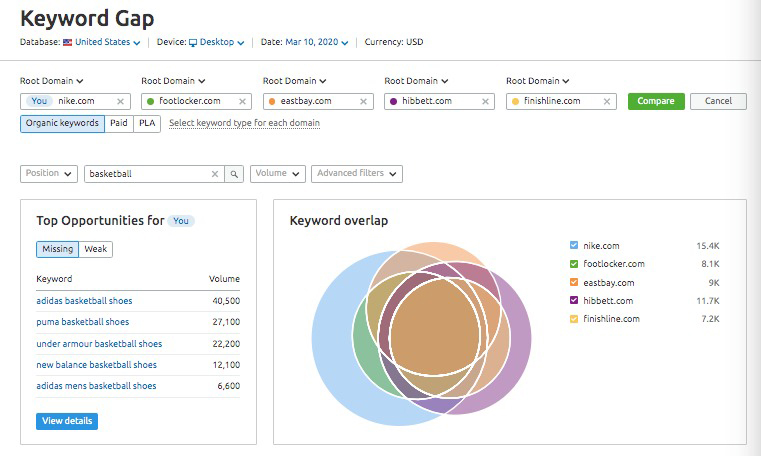
The tool also shows overlap between common keywords and differentiates between organic and paid ones. In addition, you can see the different searches made on desktop and mobile.
SEMRush will list your best keyword opportunities, so you can jump right into creating content. It will also point out pages where a popular search term exist but are weak and could be improved to rank higher. If you’re a visual learner, you’ll enjoy the charts and graphs that help you visualize keyword overlap.
SEMRush is a fairly advanced platform and all its technical jargon can be a bit confusing if you’re new to SEO. But if you learn to master it, you’ll find it offers some of the best marketing tools available.
Alexa

Alexa’s main use has long been to rank websites and gather traffic data. However, the site also provides competitive analysis, keyword research, and backlink checking functionality. Their Competitor Keyword Matrix allows you to discover content gaps and compare top-ranking keywords for up to ten sites at once.
One nifty feature is the ability to show only buyers’ keywords — those that are likely to have commercial intent. A lot of other platforms are more focused on helping you write articles and create pages to fill content gaps, not so online stores. This way, you can work specifically with the keywords you need to rank for to get more sales.
Besides this, Alexa’s marketing suite also offers a keyword difficulty tool, on-page SEO auditing, and a whole host of competitive tools. The latter include similar website finders, audience overlap tools, and website traffic statistics.
Moz

Moz is all about SEO, so of course competitor keyword analysis is one of its top features. It ranks the search volume and difficulty of keywords and allows you to compare yourself against multiple rivals. That way, it’s easy to pick out the best search terms with the lowest difficulty to try to rank for.
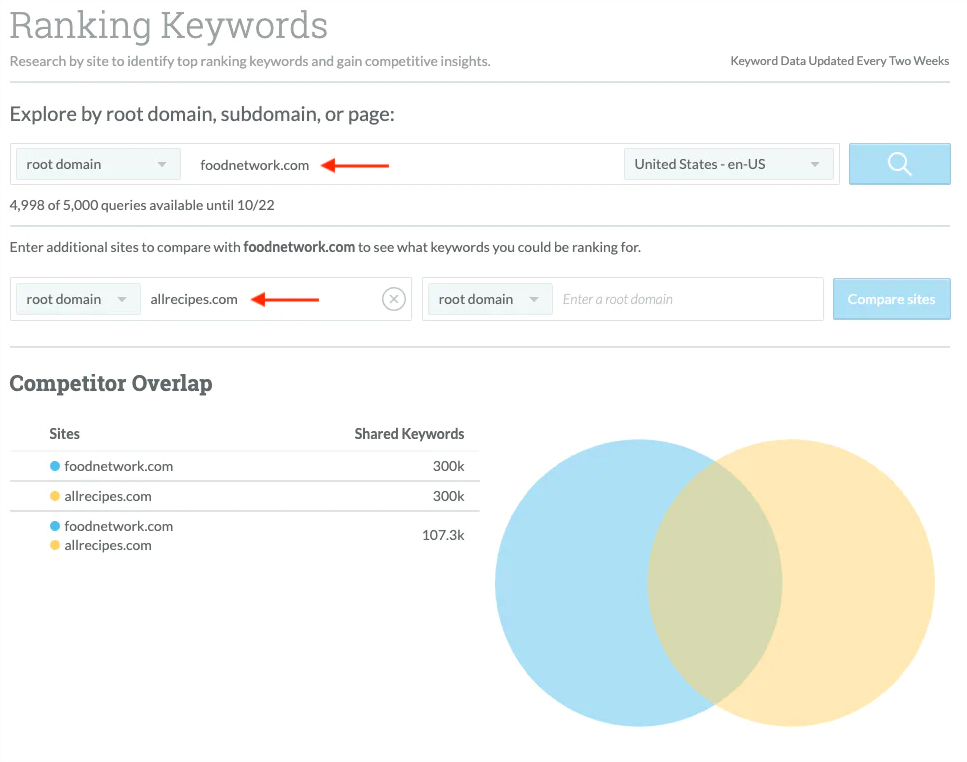
You can download the data as a CSV file and analyze it in a spreadsheet program, or just use the built-in online tool.
It also analyzes page-level keyword gaps, which is really helpful to directly compare the quality of two pages. This will show you extra opportunities you might be missing out on.
Moz has many tools to offer, and it’s very beginner-friendly despite offering several advanced features. Give it a try if you need an easy-to-use SEO platform.
SpyFu
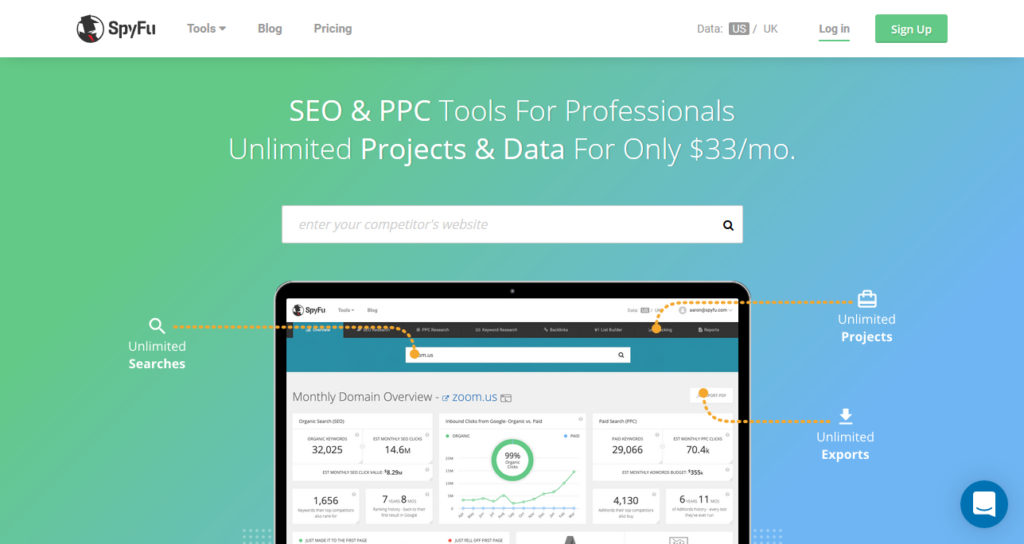
SpyFu is unique in that it focuses entirely on tracking competitor websites, and is free to start. You can go there right now and put in any competitor’s domain to see an extremely detailed statistics breakdown. It ranges from percent of organic traffic to lists of their paid and organic competitors to top ranking keywords. There’s even an estimate of how much they spend on AdWords per month.
With the Kombat feature, you can also contrast all this extensively detailed information across two other domains. Get direct comparisons and see where you’re falling short or where the low-hanging fruit is.
You can use this site for free, though you’ll need to log in and purchase a paid plan to see all of the results. If you need a tool focused solely on engaging and beating the competition, SpyFu is worth a shot. It’s also relatively cheap and offers an incredible wealth of information, .
Ahrefs

Made for anyone from SEO pros to total beginners, Ahrefs offers comprehensive tools to get your site rolling. From an SEO audit, keyword and content explorers to a rank tracker.
In addition, there’s the Site Explorer to help you keep tabs on your competition. The Content Gap is just one of its many bundled features.
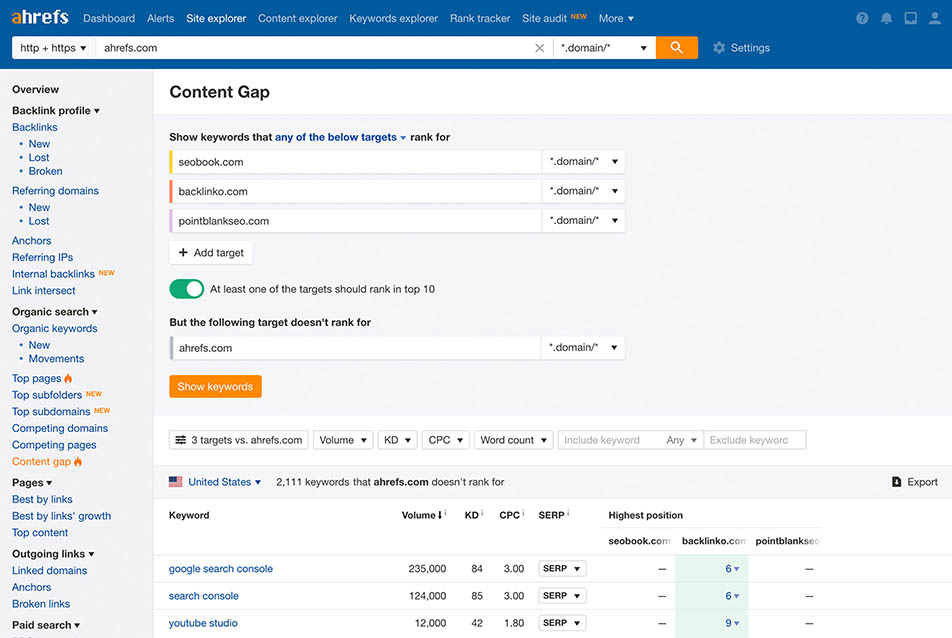
In one simple table, you get access to a huge list of keywords you aren’t yet making use of. You will also see the search volume, keyword difficulty, and highest-ranking domain right there. In addition, you can add multiple domains to compare against and choose to show only those that some or all of them rank for.
In seconds, this enables you to get access to hundreds or thousands of high-value keywords you can start targeting right now.
KWFinder
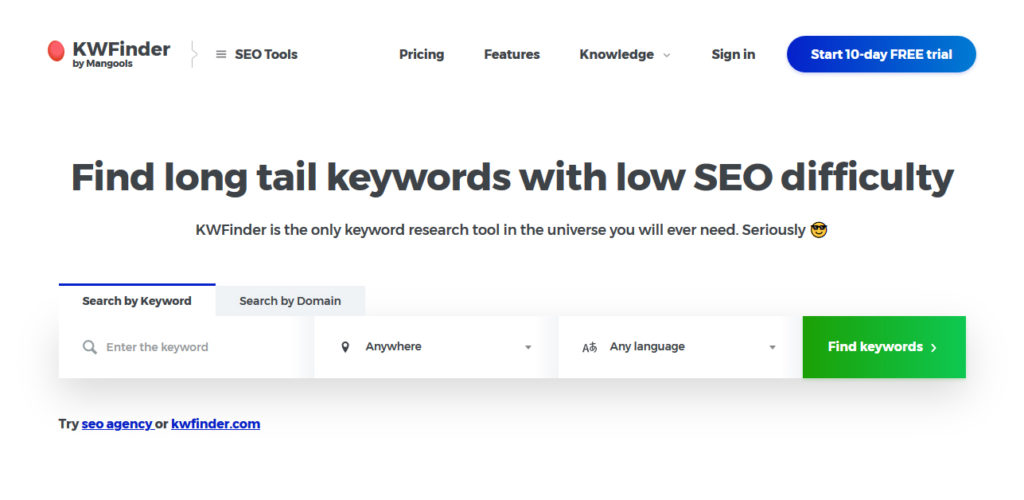
If you’ve ever had trouble locating quality keywords for your website, this freemium tool is the best place to turn to. Find those elusive long-tail and local keyword listings, search by domain, and of course dive into competitor keyword research.
You don’t even need to know your competitors to get started; try putting in your own website, and it will generate a few similar ones for you to look up. KWFinder makes it easy to filter out the really low-traffic or high-difficulty ones you don’t want to be wasting time on.
If you don’t need any extra SEO features and just want a keyword tool that lets you keep tabs on competitors, KWFinder is perfect for you.
Effectively Using Competitor Keywords
Once you’ve gathered up a big list of keywords to fill your gaps with (e.g. in a spreadsheet), it’s time to decide which ones are actually worth pursuing.
You shouldn’t just be pulling out random keywords and hoping for the best. They need to be relevant to your target audience, and a good choice for increasing growth.
It’s important to understand where the keyword is coming from, so do research on your competitor. Analyze how much traffic they get. Are they top in your industry (and a difficult target to beat), or a moderately successful but low-hanging fruit (much easier to catch up to)?

You’ll also want to actually visit their website and see if they’re a direct competitor, offering the same services as you, or just have some overlap with your industry. Visit the articles and pages they’re using to target these keywords and take notes. How can you do better to ensure you get more clicks?
With your list of terms gathered, you should plug each one into a keyword research tool. Get an accurate idea of how often it’s searched, its potential to grow your site, and how competitive the keyword is. Sometimes you can stumble on some valuable, high-potential search terms your biggest competitors aren’t using yet.
And keep in mind that this isn’t just something you do once. As new events pop up in your industry and your target audience evolves, keywords can shift and new opportunities can pop up. You want to stay on top of that and keep doing keyword research all the time.
Patch Keyword Gaps in Your Content
Keyword research is an incredibly in-depth topic, and competitor analysis is one very important method you may have overlooked. But when you’re a small business eclipsed by all these huge online presences, growing can be difficult.
You may not have the means to spend hours a day on marketing research like these big companies. However, you can see what keywords are leading people to their websites and use them to grow yourself — or experiment with similar keywords and get an edge on the competition.
First step: Identify your top competitors. Then choose a tool that has the features you need and a price you can afford. Plug your competitors in and see what keywords you might be missing out on. Know how to identify which ones are relevant and how to effectively add them to your content, and you’re sure to notice a boost in traffic.
Which of the tools in this post are you going to try? And which ended up being your favorite? Let us know in the comments below!

2 Comments